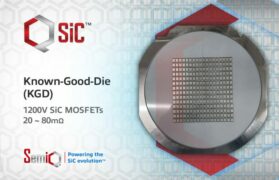Supply chain mapping has been used ever since we started to move goods around the world. Knowing where goods come from, their origin, and their manufacturers is important for consumers. But using technology within supply networks has only been introduced recently. Supply chains constantly evolve with what’s happening in the world, whether that be political and economic changes or even a pandemic. Covid-19 has been very impactful in supply chain mapping as it has exposed how much modern supply chains rely on imports from different countries and the impact of manufacturing activity falling majorly.
For the food and drink sector, it is now more important than ever to be as transparent as possible. An example of the importance of this is the 2013 horse meat scandal, which showed just how important it is to know where supplies come from.
How does supply network mapping work?
Supply chain mapping works by communicating with companies and suppliers across the world to report the source of each shipment that imports goods to markets across the work. This creates end-to-end supply chains and an understanding of who indirect suppliers are. In times before technology, supply chain mapping used labour processes. But the efforts companies made back then to improve their efficiencies can’t compete with the digitised versions of today. Research conducted by McKinsey found that, in the modern era, the average supply chain is 43 per cent digitalised.
The technology used in supply chain mapping
The main differences often seen in supply chain digitisation are usually due to the technology used. The rise of the internet and maps going online made supply mapping more accurate. The first supply chain mapping platform was developed at the Massachusetts Institute of Technology in 2008.
Supply network mapping can be difficult for companies, but they will realise the map is highly valuable to them no matter the time and cost it took to develop it. So, what are the advantages of these maps?
Real-time results
Reliable insights can be gained by the real-time data made possible by the software used in supply chain mapping. To see an example of this look at the effect e-commerce has had on retail and how data-driven actions can change your whole supply chains.
Modern supply chain mapping also used application programming interface (API) to see real-time data and to also allow the different parts of the supply chain to communicate with each other. The APIs are used to transfer supply chain data and remove it, rather than having to do this process manually.
Working together
With various supply chains going around the world, it is hard to keep track of supplies. This could be anything from raw materials such as corn, or a manufactured good such as a piston ring. Mapping creates collaboration across many companies within a supply chain so that they all know every resource, process, and shipment detail.
An important part of a buyer journey in the food industry in recent years has been the customer knowing where their food has come from. Traceability used to be a luxury only a few consumers could afford, but now consumers want it to have peace of mind.
Being able to identify who and where the suppliers are takes away the concerns of a supply chain and allows visibility of the goods.
Lowering the risk
Minimising the risk in a supply chain should be a priority for companies. This is especially true in the current global pandemic when chains have been knocked by unseen vulnerabilities and problems. At the core of these issues is the lack of rigorous processes to recognise risks and new threats, for example, cyber-attacks and supplier bankruptcy, amplified by globalisation.
The pandemic has been a big challenge that supply chains have faced, and a few have failed. Think of the start of the lockdown when no one could get any pasta or toilet roll! Morris Cohen, professor of operations, information, and decisions at Wharton, described the impact Covid-19 has had on supply chains as, “a major disruption, along the lines of having an earthquake or tsunami.”.
Risk identification can be looked at in detail across the supply chain and check regularly to make sure the chain stays as strong as it can.
Making your supply chain the best it can be with new technology and up-to-date information will allow you to have the edge over your rivals.










